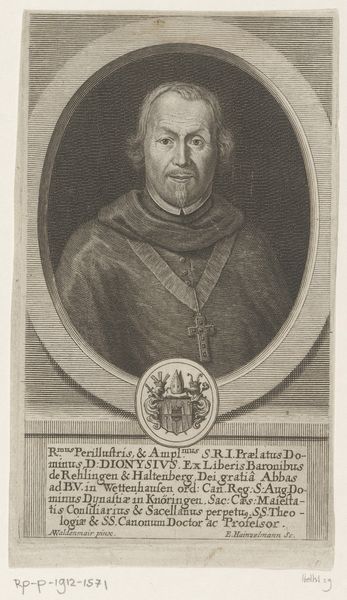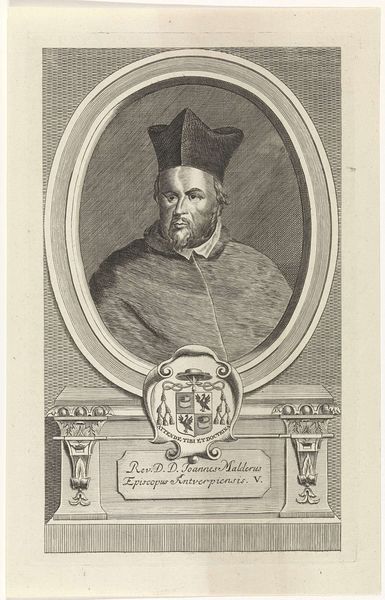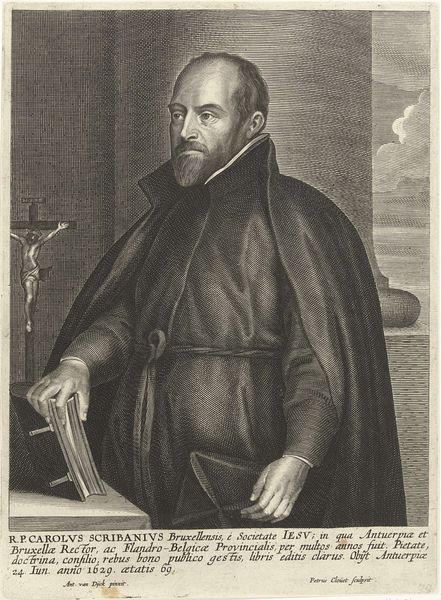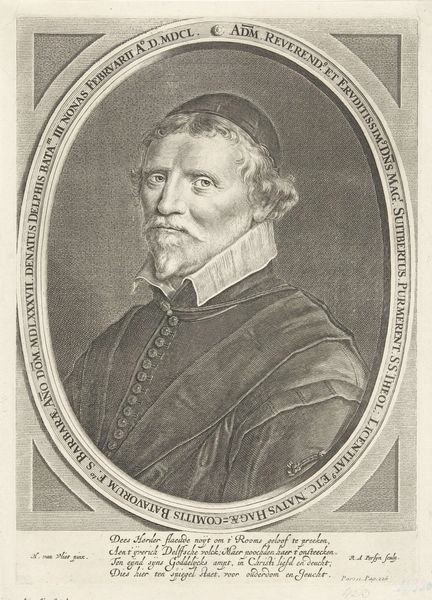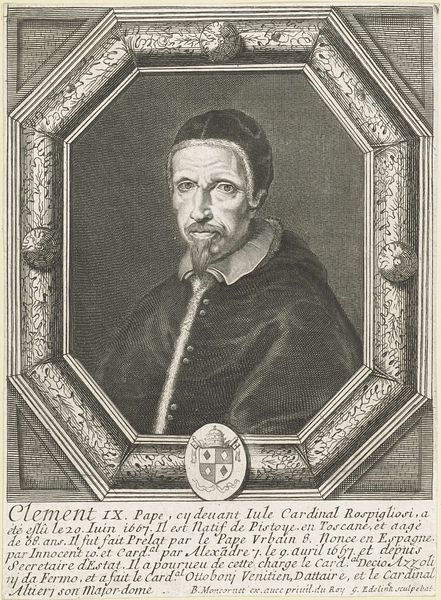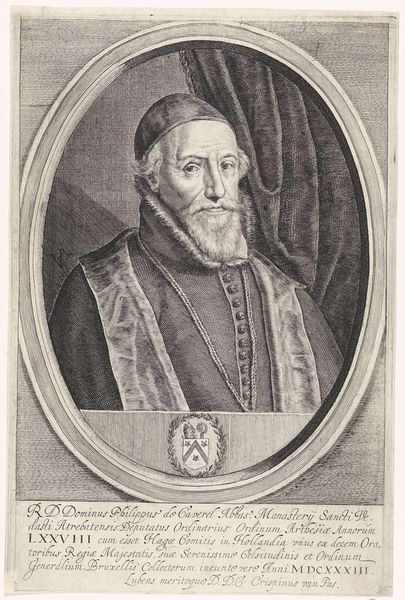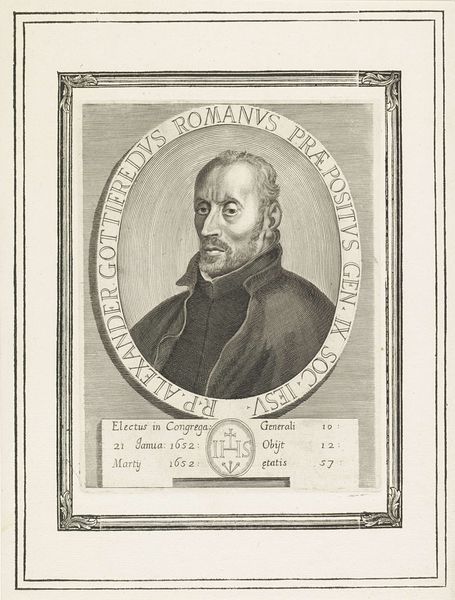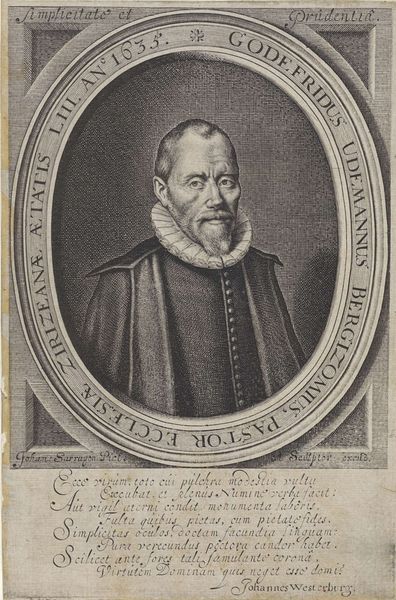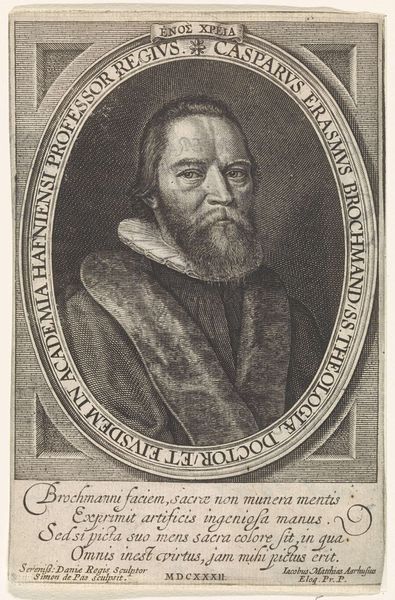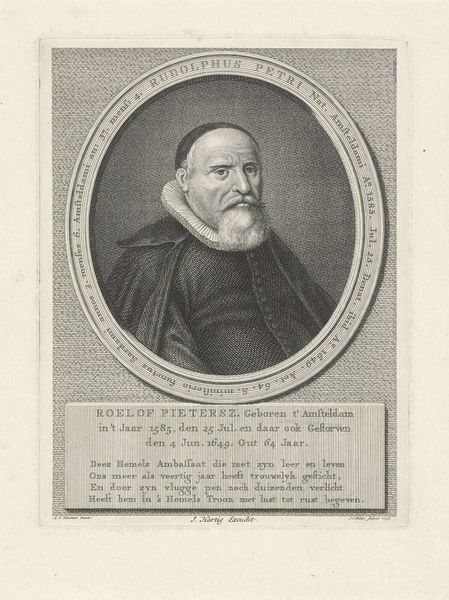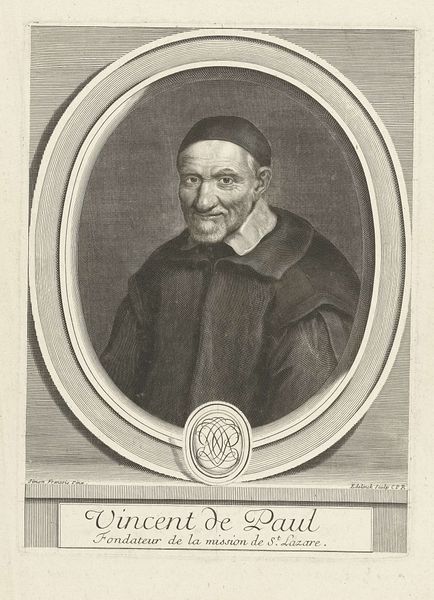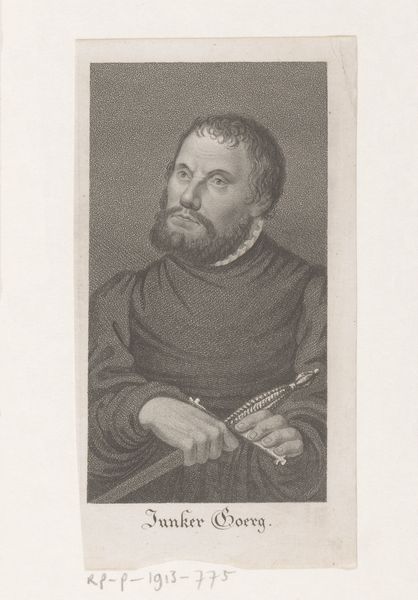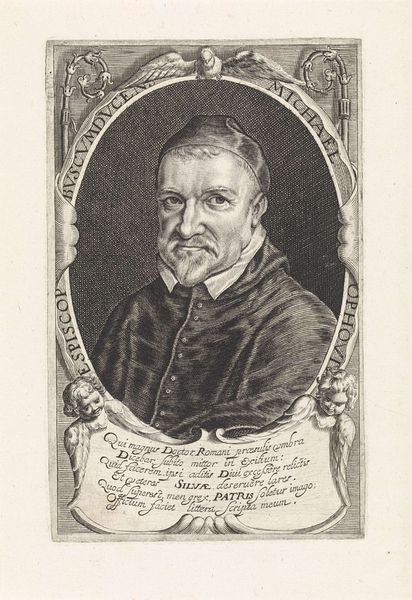
drawing, print, engraving
#
portrait
#
drawing
#
baroque
# print
#
old engraving style
#
pencil drawing
#
portrait drawing
#
engraving
Dimensions: height 265 mm, width 135 mm
Copyright: Rijks Museum: Open Domain
Curator: Look at this portrait of Cornelius Hazart, a Jesuit, created sometime between 1630 and 1704 by Jacob van Reesbroeck. The medium is listed as engraving. Editor: Well, my first impression is that there is an arresting gentleness about his gaze, an intriguing directness—although rendered with quite traditional, meticulous etching. The shading is remarkable, considering its purpose... What strikes you most? Curator: Knowing it's an engraving really pulls me in. Consider the labor—the sheer manual skill etched (no pun intended!) into this. Think of the artisan meticulously translating a likeness onto a plate. It becomes not just an image but an artifact of production. I am moved when art highlights working process. Editor: Absolutely, but perhaps more than documentation, don’t you think? The artist has managed to impart so much character. A certain depth of inner knowing reflects back at the viewer from within a very rigid medium. One wonders what Hazart was really like! Curator: Right! And let's not overlook its social function. Prints like these disseminated images, ideas…propaganda, let’s face it. This portrait was made to reproduce, circulating Hazart's image. It collapses this high art/low craft binary and it provides insight into baroque production! Editor: He does strike me as having quite piercing eyes though…eyes that have observed many of humanity’s follies! I can definitely perceive that he has acquired and honed spiritual wisdom over his lifetime. His mouth seems poised in a semi-amused smirk at what those very observations taught him. Curator: Well, when viewing art through a lens focused on labor and function, one often finds unexpected nuances. It changes how one "reads" the aesthetic value within an object. Editor: Yes! The image is made all the more compelling by these factors. I, however, appreciate the window it offers to perceive the sitter's gentle yet mischievous humanity!
Comments
No comments
Be the first to comment and join the conversation on the ultimate creative platform.
